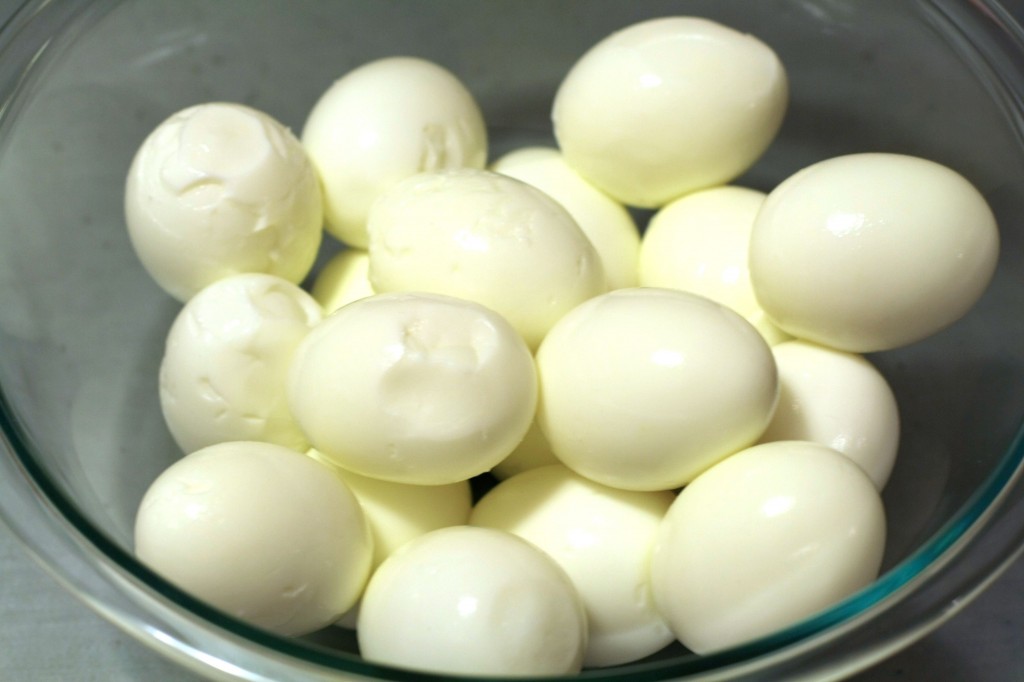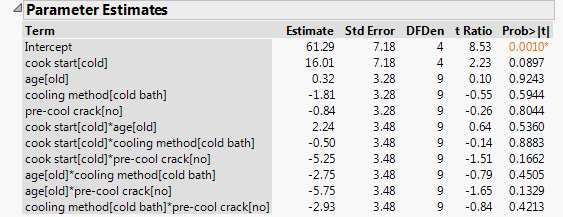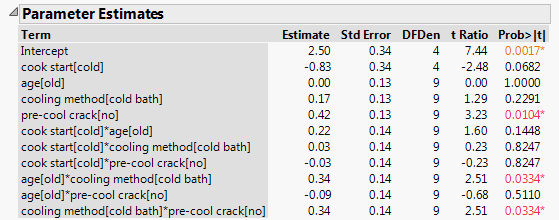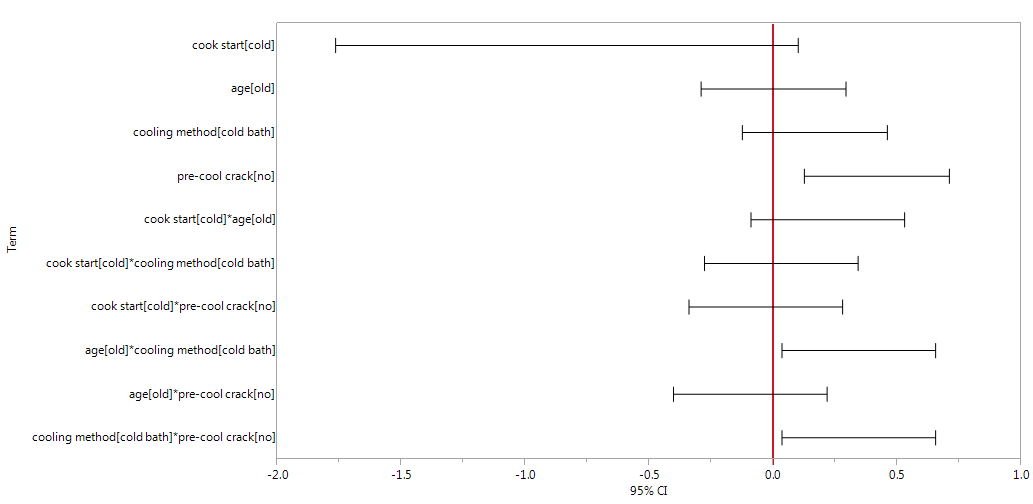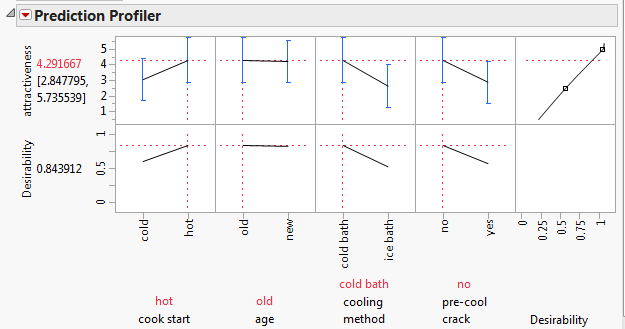- JMP User Community
- :
- JMP Technical Resources
- :
- Technical Details
- :
- R&D Blog
- :
- The eggciting results of my designed eggsperiment
- Subscribe to RSS Feed
- Mark as New
- Mark as Read
- Bookmark
- Subscribe
- Printer Friendly Page
- Report Inappropriate Content
In my previous blog entry, I talked about my frustrations in making good-looking hard-boiled eggs that were easy to peel. My Internet searches found a number of different techniques that cooks said were essential to success, but I wanted to know which techniques were best. So I set up a designed experiment to study the factors that affect the qualities of a hard-boiled egg. Now for the results…
How Do I Analyze This?
The responses measured were peel time, attractiveness of the egg and ease of peel. (Photo by Caroll Co)
First off, it’s important to notice that the Custom Designer added a column called Whole Plots (which indicates a batch of eggs that went into a pot) to the data table. We need to include this column as a random effect to ensure appropriate analysis. Fortunately, since we’ve created this design in JMP, you’ll notice a "Model" script on the left-hand side of the data table. Selecting Run Script brings up the Fit Model dialog with the model we had selected in Custom Design, and with the whole plot included properly. Alternatively, you could also go through Analyze -> Fit Model. Before hitting the Run button, I like to change the emphasis to Effect Screening to look at the Profiler.
The Results
I must admit, I had reservations about whether or not any effects would show up as significant. The results surprised me.
Peel Time
There was so much variation in the peel times that nothing came out significant at the 0.05 level. However, the effect of the cooking method was quite large, and the lack of significance could be in part due to having only 4 denominator degrees of freedom. The results suggest that starting the eggs in cold water increases the peeling time of the egg.
Or, if you prefer something more graphical, here are the 95% confidence intervals for the estimates.
If I ignore the split-plot structure and simply look at the box plots of the peel time for the 12 eggs from each cooking method, the boiling start method looks to be more promising in terms of peel time. Note that I can’t throw away the split-plot structure if I’m doing analysis; I’m using this more as a guide to see if there’s reason for further experimentation – particularly since most instructions for hard-boiled eggs start from cold water.
Attractiveness
The attractiveness rating provided some interesting results. While there are some statistically significant results here, the largest effect is still the cooking start.
The results suggest that the boiling start leads to more attractive eggs. We also notice that not cracking the egg before cooling leads to more attractive eggs. To get a better idea of what’s happening with the interactions, I like to use the Prediction Profiler.
If we open up the Profiler and select “Maximize Desirability,” we find the best predicted settings are a boiling start, an old egg, cold-water bath and no cracking before cooling. This is particularly interesting since the model suggests better results using a cold-water bath instead of an ice-water bath. At the very least, it suggests that I would want to have the cooling method in my next experiment.
Ease of Peel Rating
The ease of peeling showed one significant effect. If you’ve read through to this point, you can probably guess which effect it is. When you consider that there were only six whole plots, it’s a bit surprising that I found a difference based on the cooking method.
Final Thoughts
The bottom line is that the best predicted settings were a boiling start, an old egg, cold-water bath and no cracking before cooling. When thinking about both attractiveness and ease of peel, the results suggest that I still want to study all four factors in the next experiment (with some additions as well).
This experiment has provided me some real food for thought (pun intended). You may have noticed that I had nothing about the taste/quality of the eggs in the response. In part, this was because it was going to be difficult to keep track of, and I didn’t want to cut the eggs right after they were peeled. That said, the eggs that we’ve eaten thus far have been better cooked than any batch I can remember preparing on my own in the last few years.
I also noticed that placing the eggs straight into boiling water led to cracks in some of the eggs (in three out of 12). This didn’t seem to affect the responses, but it is something that I would likely pay better attention to next time.
It certainly looks like there’s more experimenting to be done on this. In the future, I would increase the number of whole plots by using fewer eggs per batch and possibly add another level of randomization so that I can cook multiple batches of eggs at a time in different pots. This would also let me investigate some additional factors.
Thanks to everyone for the fantastic comments thus far, here and in the LinkedIn DOE group. Some of the additional items next time would be adding salt to the water, having cooking/cooling time and temperature as continuous factors (which is made all the more interesting after discovering fascinating material such as this blog post about soft-boiled eggs).
What factors would you like looked at next time? Do you have any other ideas for experiments not involving eggs that you would like to see? Please leave a comment to let me know!
You must be a registered user to add a comment. If you've already registered, sign in. Otherwise, register and sign in.
- © 2024 JMP Statistical Discovery LLC. All Rights Reserved.
- Terms of Use
- Privacy Statement
- About JMP
- JMP Software
- JMP User Community
- Contact

